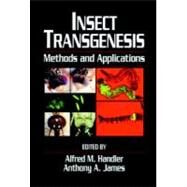- ISBN: 9780849320286 | 0849320283
- Cover: Hardcover
- Copyright: 6/28/2000
Imagine scientists controlling the transmission of certain diseases through the genetic modification of mosquitoes. Eradicating harmful insects without the use of pesticides. Or increasing the fertility of some insects who in turn eat harmful arthropods or even a plant pathogen. Those are just a few of the real-world applications of insect transgenesis, which offers substantial benefits to humankind-whether it be in improving agricultural productivity or reducing the spread of insect-vectored diseases.Insect Transgenesis: Methods and Applications is the first publication to describe in a comprehensive manner the various methodologies available, possible applications, and the risk assessment and regulatory issues involved in this fascinating area of research.Divided into several areas of interest, the book starts with an overview of the history and methodology of insect gene transfer. The book then examines gene targeting by homologous recombination and recombination systems, and systems for transgenic selection, including visible eye color markers, chemical resistance, and fluorescent proteins. Other sections consider the use of various vector systems to integrate DNA into a host genome or to express foreign genes in a host organism.The work concludes with strategies for the use of transgenic insects, including examples for agricultural pests and vectors of disease. Of particular interest are the final chapters that discuss risk assessment considerations and governmental regulatory procedures for the transport and release of transgenic insects.






